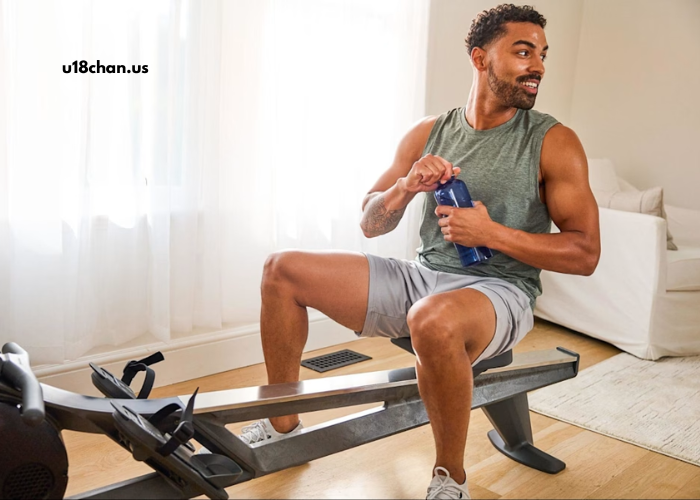Staying active and healthy is a goal that many individuals strive for, but it’s important to remember that achieving and maintaining a fitness routine requires planning, dedication, and patience. Whether you’re a beginner looking to start your fitness journey or someone with more experience aiming to reach new milestones, understanding how to set and achieve realistic fitness goals is key to long-term success. In this article, we will explore expert advice on how to set fitness goals that align with your lifestyle, stay motivated, and ultimately stay healthy and active.
Importance of Setting Fitness Goals
Before diving into the details of how to set your fitness goals, it’s crucial to understand why they are so important. Setting specific and measurable goals not only helps you stay on track but also provides you with a sense of direction and motivation. Fitness goals give you something to strive for and help you monitor your progress, ensuring that you stay committed.
The Role of Consistency in Achieving Fitness Goals
Consistency is the foundation of success in any fitness journey. While it’s easy to set ambitious goals, it’s equally important to create a sustainable plan that allows you to maintain regular activity. Small but consistent efforts often lead to more significant and lasting results than sporadic bursts of intense exercise. Creating a balanced workout schedule with manageable targets is essential for building a long-term fitness routine.
Types of Fitness Goals You Can Set
Fitness goals can be as varied as the individuals who set them. They may include weight loss, strength building, improved cardiovascular health, flexibility, or mental well-being. However, regardless of the specific goal, there are a few general principles you should keep in mind when setting your fitness targets.
1. Weight Loss Goals
One of the most common fitness goals is weight loss. Achieving a healthy weight not only improves appearance but also significantly reduces the risk of several chronic diseases. If weight loss is your primary goal, remember that it should be approached with a balanced combination of exercise and healthy eating. Extreme weight loss strategies can be harmful, so focus on gradual, sustainable changes.
- Set realistic milestones: Aiming to lose 1-2 pounds per week is a healthy and achievable goal.
- Incorporate cardio and strength training: Combining aerobic exercises like walking, running, or cycling with strength training can help burn calories and increase muscle mass.
- Mind your diet: Nutrition plays a major role in weight loss. Focus on a well-rounded diet with a balance of macronutrients (proteins, carbohydrates, and fats) to fuel your body for both exercise and recovery.
2. Strength Building Goals
For many people, building strength is a key aspect of fitness. Strength training not only helps increase muscle mass and definition but also enhances overall functional fitness. To achieve strength-building goals, focus on progressive overload—gradually increasing the weight or intensity of your workouts.
- Choose compound exercises: Movements like squats, deadlifts, and bench presses engage multiple muscle groups, making them ideal for building strength.
- Train each muscle group: Make sure to target all major muscle groups each week for balanced development.
- Track your progress: Keep a record of the weights you’re lifting to monitor improvements and make adjustments when needed.
3. Cardiovascular Fitness Goals
Cardiovascular fitness is crucial for maintaining a healthy heart and lungs. Activities like running, cycling, swimming, or even brisk walking can help improve cardiovascular endurance. Setting specific targets such as running a 5K or cycling a certain distance can provide measurable benchmarks for improvement.
- Start slow: If you’re new to cardio, gradually increase the duration and intensity of your workouts over time.
- Mix it up: Incorporate various forms of cardiovascular exercise to prevent monotony and engage different muscles.
- Focus on consistency: For cardiovascular health, aim for at least 150 minutes of moderate-intensity cardio per week.
4. Flexibility and Mobility Goals
Improved flexibility and mobility can significantly enhance performance in other types of exercise, reduce the risk of injury, and increase overall physical well-being. Yoga, Pilates, and stretching routines are excellent ways to work on flexibility and mobility.
- Stretch regularly: Dedicate time to stretching before and after your workouts to maintain flexibility.
- Incorporate yoga or Pilates: These practices not only improve flexibility but also enhance core strength and mental focus.
- Work on joint mobility: Mobility exercises focus on increasing the range of motion in your joints, which is essential for both strength training and daily movement.
How to Stay Motivated While Working Toward Fitness Goals
Achieving fitness goals is not always easy, and maintaining motivation can be one of the biggest challenges. However, there are a few expert-approved strategies that can help you stay on track.
1. Track Your Progress
One of the most effective ways to stay motivated is by tracking your progress. Whether it’s through a fitness app, a workout journal, or a simple spreadsheet, recording your workouts and results allows you to see how far you’ve come and where you need to focus your efforts.
- Track metrics that matter: Whether it’s the number of push-ups you can do, the weight you can lift, or the distance you run, seeing tangible improvements is motivating.
- Celebrate milestones: Don’t wait until you’ve reached your ultimate goal to celebrate. Recognize and reward yourself for smaller achievements along the way.
2. Find a Workout Buddy
Having someone to share your fitness journey with can keep you accountable. A workout partner provides support, motivation, and even a bit of friendly competition. They can also offer encouragement when you’re feeling down or demotivated.
- Choose a committed partner: Your workout buddy should be someone who shares similar fitness goals and is equally committed to the journey.
- Try group classes: If a workout buddy isn’t available, group fitness classes can provide both motivation and a sense of community.
3. Make Fitness Fun
Engagement is key to long-term success. If you’re not enjoying the process, it can be difficult to stay motivated. Look for ways to make fitness fun, such as trying new workout classes, sports, or outdoor activities.
- Variety is the spice of fitness: Mix up your routine with different types of exercises to prevent boredom.
- Play a sport: Playing a sport like tennis, basketball, or soccer can be an enjoyable way to stay active while working on cardiovascular health and agility.
4. Focus on the Process, Not Just the Outcome
Instead of solely focusing on the final goal, shift your mindset toward enjoying the journey. Embrace the daily routines and small victories. The process of working toward your fitness goals can be just as rewarding as the outcome.
Overcoming Setbacks and Plateaus
No fitness journey is without its challenges. It’s common to face setbacks or experience a plateau in progress. Instead of feeling discouraged, experts recommend the following strategies to overcome these obstacles.
1. Adjust Your Goals
If you find that your original goals are no longer motivating or attainable, it’s okay to adjust them. Reevaluate your current fitness level and reassess what you’re working toward.
- Break big goals into smaller ones: If you’re feeling overwhelmed by a large goal, break it down into more manageable chunks.
- Focus on process-oriented goals: Instead of focusing solely on outcomes like losing weight or running a faster 5K, set goals based on your exercise habits, like working out a certain number of times per week.
2. Listen to Your Body
Overtraining can lead to injury, burnout, or illness. It’s essential to listen to your body’s signals and take rest days when needed. Adequate rest allows your muscles to recover and helps prevent injuries.
- Rest and recovery are key: Aim to take at least one or two rest days per week.
- Incorporate active recovery: Activities like yoga, walking, or light stretching can help your body recover while staying active.
3. Seek Professional Guidance
If you’re facing challenges in reaching your fitness goals, consider working with a personal trainer or fitness coach. A professional can provide personalized guidance, create a tailored fitness plan, and help you break through plateaus.
Conclusion
Setting and achieving fitness goals is an ongoing process that requires commitment, consistency, and a well-rounded approach. Whether your goals are focused on weight loss, strength building, cardiovascular health, or flexibility, it’s essential to create a fitness plan that works for your lifestyle. By tracking progress, staying motivated, overcoming setbacks, and seeking expert guidance when necessary, you can maintain an active and healthy lifestyle for years to come. Remember that the journey itself is as important as the destination, and small steps taken today will lead to big results tomorrow.




